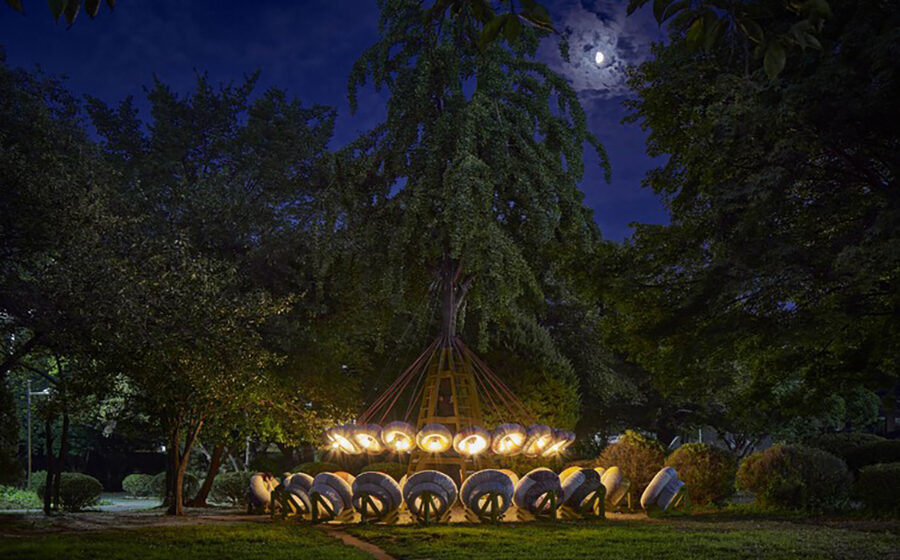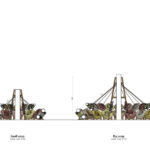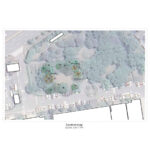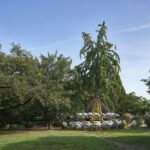The Bojagi Lounge Pavilion, designed by Izaskun Chinchilla Architects, stands as an open-air pavilion reflecting on the integration of circular economy principles with traditional Korean culture. Situated within the ‘ZONE 7; Your Imaginary Space’ exhibition by the Anyang Public Art Project (APAP), the pavilion celebrates nature and biodiversity while engaging with the local community.
Context and Purpose
Located in Anyang, South Korea, the pavilion serves as a venue for APAP, which aims to transform the city into an urban gallery, showcasing art in daily life. By reimagining the city’s landscape and culture, APAP fosters public engagement and appreciation for the city’s history and development.

Cultural Inspiration: Bojagi and Norigae
The pavilion draws inspiration from traditional Korean fabric and knot tassel techniques. Bojagi, a versatile fabric used for wrapping and transporting items, symbolizes sustainability and reuse. Similarly, Norigae, a decorative knot tassel, adds elegance to traditional Korean attire and gift wrapping. Embracing these traditions, the pavilion showcases the beauty of reusable materials and cultural heritage.
Design Elements
The pavilion features two main elements: a lamp with a speaker and inflatable sofas. Wrapped in outdoor textiles donated by Sunbrella, these elements reflect Bojagi and Norigae traditions. The lamp-speakers hang from a structure around a tree, while the sofas rest on CNC-cut plywood bases. Together, they form two large rings, inviting visitors to relax and enjoy nature.
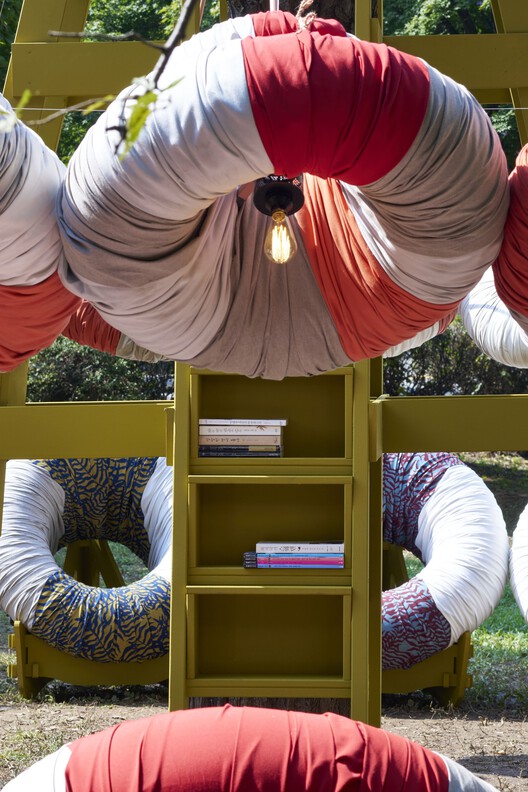
Innovative Approach
Despite its traditional inspirations, the pavilion incorporates innovative design elements. The upper ring, seemingly attached to the tree, is supported by an auxiliary structure to protect the tree. This structure, consisting of interconnected ladders with bookshelves, enhances the pavilion’s functionality and aesthetic appeal.
Community Support
The project is made possible through the support of various organizations, including Acción Cultural Española (AC/E), The Bartlett School of Architecture (UCL), and fabric brand Sunbrella. Their contributions underscore the collaborative effort behind the pavilion’s creation.

Conclusion
The Bojagi Lounge Pavilion serves as a testament to the fusion of tradition and innovation in contemporary architecture. By reinterpreting traditional Korean techniques within a modern context, Izaskun Chinchilla Architects have created a space that not only celebrates cultural heritage but also promotes sustainability and community engagement.

